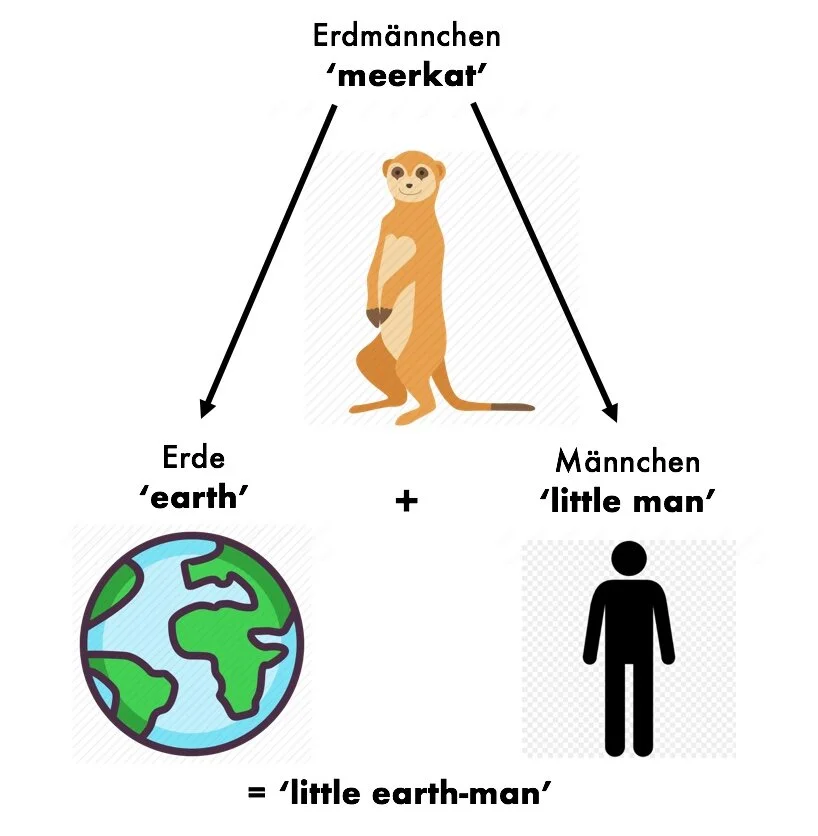El Mundo Español
Introduction
Spanish is a language spoken by approximately 500 million native speakers. It is the official language of the following 20 countries spanning four continents: Argentina, Bolivia, Chile, Colombia, Costa Rica, Cuba, Dominican Republic, Ecuador, El Salvador, Equatorial Guinea, Guatemala, Honduras, Mexico, Nicaragua, Panama, Paraguay, Peru, Spain, Uruguay, and Venezuela. It is also the official language of Puerto Rico.
In the U.S., there are about 40 million native speakers and 11 million speakers of Spanish as a second or heritage language, for a nationwide total of about 51 million Spanish speakers.
In other words, Spanish is very popular worldwide!
With so many different speakers scattered all over the globe, each with their own dialect, there is bound to be a wide range of variation in each Spanish-speaking country, from the national level down to the smallest language communities. In some of these regions, Spanish has been influenced by the indigenous languages of that region, adding even more variation to the Spanish-speaking world. We’ll see some examples of this later.
(A Brief History of the) Spanish Dialectal Regions
For the sake of convenience, we can divide the dialectal ranges of Modern Spanish into six regions, five of which are in the Americas: Mexico, the Caribbean, the Andean countries, the cosmopolitan Río Plata region of South America, Spanish in the US, and Spanish in Spain, all with their own characteristics (see Fig. 1).
Fig 1. A map of countries with Spanish as an official language.
Let’s begin with the region where it all started: the Iberian Peninsula. Though the Spanish Constitution recognizes Spanish as the only official language, several of Spain’s autonomous regions have other co-official languages, such as Catalan in Catalonia, Galician in Galicia, and Basque in the Basque Country. Basque is a language isolate whose origin is difficult to trace. This means it is unrelated to any other living languages, including Spanish and all other romance languages that descended from Latin. The Castilian dialect of Spanish originated in northern Spain, formally the kingdom of Ferdinand II of Aragon (1452-1516) and his wife, Isabella I of Castile (1451-1504). The territorial expansion of Castile, known as la Reconquista (‘that which was re-conquered’), is the reason that the Castilian dialect was chosen as the standard dialect of the Peninsula. Later, it became the official language of Spain.
The Spanish conquest of the Americas led to further expansion of the Spanish language. Upon contact with the indigenous languages of these conquered lands, Spanish acquired many loanwords we still use today. Centuries later when these lands gained their independence from Spain, Spanish continued to be their official language, with each country cultivating their own lexicons based on their own regionalisms. Additionally, each newly-independent country adapted its own accent and grammatical rules, such as voseo, which is the use of the pronoun vos and its verbal forms for the informal singular ‘you’ pronoun. This was later replaced by the pronoun tú (‘you’) in regions whose viceroyalty kept in contact with the Iberian Peninsula. Later, vos eventually lost its prestige in the Peninsula. On the other hand, in areas where contact with Spain was less frequent, i.e. Central America and the Río Plata region, speakers were less influenced by the linguistic changes of the Peninsula.
So, what do these changes look and sound like?
Spanish in Spain
One of most widely noted differences between Castilian Spanish and Latin American Spanish is called ceceo, which is a distinction between the sounds /s/ for the letter <s>, versus /θ/ for the spellings <ce>, <ci>, and <z>. (In English, too, these sounds distinguish words, as “sing” versus “thing.”) Examples of distinctions characteristic of ceceo are shown below.
<s> [ʂ] casa ‘house’ ~ <s> [ʂ] sera ‘basket/pannier’
<z> [θ] caza ‘hunt’ ~ <z> [θ] cera ‘wax’
Another hallmark of Castilian Spanish is the retroflex apicoalveolar /s/, meaning it is articulated with the tongue-tip curled up on the alveolar ridge (right above your top teeth), with its acoustic effect similar to that of /ʃ/ (the sound in “shushing”). Additionally, there is also a voiceless velar fricative /x/ that is characteristic of this dialect. It is the rough sound similar to the ch of German. This /x/ is also common in the Spanish of the Río Plata!
caja ‘box’ [ká-xa]
jamás ‘never’ [xa-más]
Perhaps the most indicative characteristic of Castilian Spanish is the use of the pronoun vosotros for second plural (you-all) and its corresponding verb endings, such as Vosotros habláis frecuentemente ‘You speak often.’ The exception to this is in the autonomous region of Andalusia in southern Spain, where ustedes replaces vosotros for ‘you-all,’ similar to Latin America.
In fact, so many exceptions to the Castilian Spanish dialect come from Andalusia that it is considered its own sub-dialect from which many characteristics of Latin American Spanish are derived. A list of the most common features is given in (1-4) below and, as you’ll see, these characteristics are alive and well today in many of the dialects of Latin America!
1. /b/
This sound is realized as a voiced fricative [β] and is sometimes dropped in between vowels:
a. Acaba ‘finishes’ [a-ká]
b. Trabajaba ‘used to work (somewhere)’ [tra-βa-há]
c. hablaba ‘used to talk’ [a-βlá]
2. /d/
This sound is realized as the voiced fricative [ð] and also gets dropped
sometimes in between vowels:
a. Casado ‘married’ [ka-sá-o]
b. Lado ‘side’ [lá-o]
c. medico ‘doctor’ [méj-ko]
d. Ustedes ‘you pl.’ [us-tés] or [us-té]
It also gets dropped at the end of words:
e. Verdad ‘truth’ [ber-ðá]
f. Calidad ‘quality’ [ka-li-ðá]
3. /s/ seseo: This term contrasts with ceceo (defined above), and means: no distinction between /s/ and /θ/, meaning /s/ is pronounced as [s] in every instance of <s>, <ce>, <ci> and <z>. This is the only feature that is universal to every Spanish dialect in Latin America.
<s> [s] sera ‘basket/pannier’ ~ <s> [s] casa ‘house’
<z> [s] cera ‘wax’ ~ <z> [s] caza ‘hunt’
At the end of a syllable or in word-final position, the /s/ is ‘aspirated’ (pronounced as [h]) or dropped. This is also very common in Caribbean Spanish!
a. estamos ‘we are’ [eh-tá-moh] or [e-tá-mo]
4. /h/
The /f/ in Latin underwent a sound shift to /h/ in word-initial position, which was pronounced for many years and finally became silent.
a. FORNO [fór-no] > horno [hór-no] > [ór-no]
In Andalusia, the [h] sound is maintained in words like:
b. [hór-no] horno ‘oven’
c. [hár-to] harto ‘fed up’
d. [há-se] hace ‘does/makes’
e. [ha-βlá] habla ‘talks’
Finally, there is what linguists call yeísmo, which is the merger of the sounds spelled <ll> and <y> (/ʎ/ and /ʝ/) so that word pairs like halla—haya or callo—cayo, distinct in other dialects, are pronounced the same way.
Mexican Spanish
Mexican Spanish shares many of these features with the Andalusian subdialect, namely seseo, word-initial [h], and yeísmo, though there are parts of Mexico where [ʒ] is used instead of [ʝ] (English “vision” and “yellow,” respectively). For example, the first person pronoun yo ‘I’ can be pronounced as [ʒo] or [ʝo]. Unlike in Andalusia, the /s/ in word-final position is firm, neither aspirated nor dropped. The intonation pattern of Mexican Spanish is also characteristic of clear influence from the indigenous language Nahuatl. Examples of nahuatlismos are provided below. Furthermore, Mexican Spanish does not use the voseo mentioned earlier, so this variety is referred to as tuteante for its use of the second person pronoun tú. One other feature unique to Mexican Spanish is the shift of /tʃ/ (spelled <ch>) to [ʃ], although this feature is mostly confined to the northern state of Chihuahua. Though also found in some varieties in Cuba, it is not as widespread as it is in Mexico!
Some common lexical items from Mexican Spanish:
¿Qué onda? (Informal greeting) ‘Hey, what’s up?’
Quihúbo(le) (Informal greeting) ‘What’s up?’
Chav@ ‘Boy/girl’
Güey ‘Dude/bro/man’ (used by men and women alike)
Ándale ‘C’mon/Hurry up!’
Híjole/Órale Expression of surprise (‘wow’; ‘no way’)
¡Qué padre/chid@! ‘How cool!’
Jef@ ‘Dad/mom’
Nahuatlismos:
Elote ‘Corn’
Tequila ‘Tequila’
Cacahuate ‘Peanut’
Camote ‘Sweet potato’
Jícama ‘Jicama’ (edible root)
Papalote ‘Kite’ (man-made object)
Caribbean Spanish
Caribbean Spanish also has some influence from indigenous languages, mostly from Taíno (Caribbean) and from some languages of West Africa, such as Hausa, and of Southern Africa, such as Kimbundu . Some examples of such tainismos and africanismos are:
Taíno
Ají ‘pepper’
Barbacoa ‘barbecue’
Batata ‘sweet potato’
Papaya ‘papaya’
Canoa ‘canoe’
Tabaco ‘tobacco’
Caimán ‘alligator’
Africanismos
Mambo (type of dance)
Maricongo (type of banana)
Mofongo (dish made with banana)
Chévere ‘cool’, ‘awesome’
Aside from indigenous influence, Caribbean Spanish also shares many of the features of Andalusian sub-dialect including yeísmo, the weakening of intervocalic /d/ and the aspiration (or deletion) of the /s/ in syllable- or word-final position.
Spanish in the US
Because Spanish in the US is in constant contact with English, these dialects of Spanish feature lots of code-switching, calques and loanwords, since many Spanish speakers in the US are bilingual. US Spanish can be further divided into five main sub-dialects: Puerto Rican and Dominican Spanish in New York, Cuban Spanish in Miami, Mexican Spanish in the southwest (California and Texas), and finally the dialect of Spanish descendants in northern New Mexico and Colorado.
Much like in the other dialects mentioned above, US Spanish in the southwest is also yeísta, its /s/ is firm and there is a shift of /tʃ/ > /ʃ/ like with Mexican Spanish, the [h] is pronounced in word-initial position for some words, and /d/ also becomes [ð] in between two vowels (and is sometimes dropped).
In New Mexico and Colorado, the /s/ is aspirated like in the Caribbean dialect in syllable- or word-final position. Additionally, like in the Caribbean dialect, the sounds [r] and [l] are treated as interchangeable, which is a feature of the Andalusian sub-dialect as well, as in the following:
a. Comer ‘to eat’ [ko-mél] vs. [ko-mér]
b. Puerta ‘door’ [pwél-ta] vs. [pwér-ta]
Spanish in the Andean Countries
Turning now to the Spanish of the Andean countries (Colombia, Ecuador, Peru, Bolivia), there is a distinction between the Spanish of the Highlands and that of the coastal area. Highlands speakers are known for their slow speech, enunciated consonants, firm /d/ in between vowels, firm /s/ and, unlike other dialects discussed so far, their use of lleísmo, which means making a distinction between /ʎ/ and /ʝ/. In the lowlands and coastal area, it is essentially the opposite, i.e. fast speech, /d/ is often lost or weakened in between vowels, aspirated or deleted /s/, yeísmo. Overall, they make general use of the voseo in this dialect as well, except for Lima, Peru, which is tuteante. There is also some influence from Quechua, as in the examples below. You’ll notice some of these Quechua borrowings have also made it into English!
Quechua
Chacra ‘farm’
Llama ‘llama’ (mammal)
Vicuña ‘vicuna’ (llama skin)
Puma ‘puma’
Gaucho ‘cowboy’
Pampa ‘plain grasslands’
Inca ‘king’
Spanish in the Río Plata
Finally, we have arrived at the Spanish of the Río Plata region, embracing Argentina, Uruguay, and Paraguay. The most important differences in this dialect include zeísmo (or zheísmo) in older generations and sheísmo in the younger, lleísmo in Paraguay, and the widespread use of voseo.
Zeísmo (or zheísmo): the pronunciation of <ll> and <y> as the voiced fricative [ʒ] (in Eng. “leisure”) so that ‘malla’ and ‘maya’ are both pronounced as [má-ʒa].
Sheísmo: <ll> and <y> are pronounced as voiceless [∫], ‘malla’ and ‘maya’ are both [má-∫a]
The lleísmo varieties, on the other hand, makes a distinction between <ll> and <y> such that ‘malla’ is [má-ʎa] while ‘maya’ is [má-ʒa]. As far as I know, this is most commonly found in the Spanish of Paraguay.
Voseo is also very common in this part of the Spanish-speaking world, to the point where a speaker who uses tú is quickly identified as a foreigner. For the Río Plata region, the voseo is on the national level and includes pronominal and verbal forms, such as present indicative and imperative:
Present Indicative Voseo Tuteo
Vos hacés tú haces ‘you do/make’
Vos tenés tú tienes ‘you have’
Imperative Voseo Tuteo
Haceme hazme ‘make me’
Sentate siéntate ‘sit down’
In Paraguay, there is also influence from the indigenous language Guaraní, which holds official status alongside Spanish. Plus, it is the only indigenous language of the Americas spoken as a native language by both the indigenous population and people of European descent alike. Vowels are often nasalized in the Spanish of Paraguay because Guaraní has six nasalized vowels. There is also double negation and some lexical borrowings from Guaraní.
Guaranismos
Ananá ‘pineapple’
Ñandú ‘ostrich’
Yacaré ‘alligator’
Suruví ‘catfish’
Jaguar ‘jaguar’
Conclusion
At this point it should be clear how much variation exists in such a widely-spoken language as Spanish! And I’ve only just scratched the surface when you consider how different the dialects are within their respective countries as well. Think about how different English is in New York, California or other more distinguishable dialects such as the “southern drawl” typical of states like Mississippi or even Texas. If you are learning Spanish, this all might seem a little overwhelming. You might even be thinking to yourself that with all this variation, it will be impossible to learn the language. I promise you it can be done and we here at LanGo are here to help!
































Tools for helping you master some of the trickier points of German grammar, whether you’re learning it for the first time or wanting to review the fundamentals. Los geht’s!